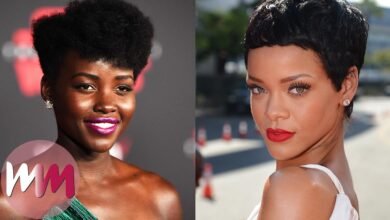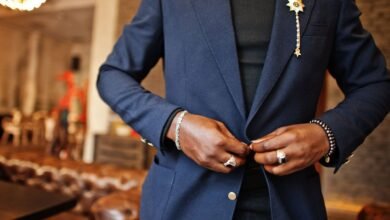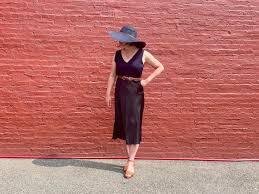Campus Couture 2025: Essential Fashion Trends for U.S. Students

Introduction
2025 has student style mixing nostalgia with purpose: early-2000s silhouettes share locker space with thrifted finds, while comfort and personal expression rule hallways and campus quads. This guide focuses on the trends most visible among U.S. students what they’re buying, how they’re wearing it, and why these looks matter. The goal is to provide accurate, trustable insights into how fashion is evolving for younger generations. Expect actionable descriptions (what to pair with what), quick styling notes for different budgets, and a short FAQ at the end.
Y2K Revival & Retro Prep
One of 2025’s strongest motifs among U.S. students is a reimagined Y2K / early-2000s aesthetic blended with classic prep think low-rise and wide or baggier bottoms, micro-tops, babydoll silhouettes, denim miniskirts, and varsity or cropped cardigans layered over tees. But it’s not a pure throwback; students remix nostalgia with contemporary proportions (roomier legs with tighter tops, or vice versa) and unexpected pairings like a school-routine blazer over a graphic band tee. This mix allows for both identity play and practical wear: denim miniskirts and platform sneakers show up at weekend hangouts, while oversized denim jackets and crewnecks work for chilly classrooms. For students, the lesson is flexibility combine the comfortable and the nostalgic, and use smaller investment pieces (belts, scarves, vintage tees) to test the look before committing to pricier staples.
Sustainable & Secondhand Styling
Sustainability is more than a buzzword for many students in 2025; secondhand shopping, upcycling, and eco-minded brands influence what’s considered “in.” A significant share of Gen Z prioritizes thrifted pieces and resale marketplaces, and many students build wardrobes around curated secondhand finds rather than fast buys. Practically, that means mixing reworked vintage sweaters or thrifted outerwear with new essentials pairing a vintage varsity jacket with fresh wide-leg pants or wearing a reworked band tee with tailored trousers. This approach is both economical and identity-forward: students can show individuality while reducing waste and stretching budgets. On campus, sustainable styling often reads as more unique and authentic than seasonless trend chasing; it also gives students a quick way to follow trends (by hunting for a Y2K-era piece) without paying full retail. If you’re shopping for a student, focus on durable basics and then hunt resale for the statement items that make an outfit feel personal.
Comfortable Streetwear & Athleisure
Comfort continues to dominate: oversized tees, baggy and wide-leg pants, jogger silhouettes, and platform or retro sneakers are staples across high schools and college campuses. Students are leaning toward looser fits in 2025, where relaxed bottoms pair with more structured or layered tops. Athleisure has also matured into “elevated comfort”: technical fabrics, clean joggers, and upgraded hoodies that pair with vintage outerwear or preppy knits. Footwear trends lean retro (chunky sneakers, platform soles) or classic (low-top leather tennis shoes) depending on mood and budget. Function plays into choices sneakers that stand up to a long campus day, outerwear that layers for changing classrooms, backpacks that balance capacity with aesthetic. For outfit building: anchor looks with one comfortable staple (e.g., wide-leg sweats) then add a focused detail (belt, cropped cardigan, or a structured jacket) to keep the ensemble intentional rather than sloppy.
Statement Accessories & Personalization
Accessories are the fast lane for personalization students use jewelry, belts, hats, pins, and bags to transform basic outfits into individual statements. Fall 2025 trends emphasize small details: brooches, scarves, statement belts, newsboy caps, and layered necklaces are popular ways to signal aesthetic and mood. On campus, accessory choices often declare subculture, fandom, or DIY sensibility: enamel pins and custom patches on a denim jacket, a distinctive phone charm, or a curated stack of rings. This is a low-cost, sustainable way to stay on-trend invest in a few versatile accessories and rotate them through thrifted and new pieces. Accessories also solve practical student problems (hair ties that double as bracelets, tote bags that carry books and a laptop). Whether you prefer maximalist layering or a single standout piece, accessories let students iterate quickly without overhauling their full wardrobe ideal for budgets, lockers, and rapidly changing personal tastes.
Conclusion
Student fashion in 2025 mixes nostalgia, conscience, comfort, and individuality. The common thread is choice: students are weaving preppy, Y2K, streetwear, and sustainable elements into looks that are expressive but campus-practical. For parents, retailers, and content creators, the best approach is to prioritize durable basics, encourage experimentation through accessories or secondhand hunting, and respect that students often use clothing to explore identity. Trends will shift quickly so focus on adaptable pieces that work across styles and seasons.
FAQs
Q: Which single item gives the most trend impact for a modest budget?
A: A well-chosen accessory statement belt, vintage scarf, or enamel pins can refresh many outfits without large expense.
Q: Are thrifted pieces still “in” for students?
A: Yes secondhand and upcycled items are central to 2025 student wardrobes for both style and sustainability.
Q: How should students mix comfort with looking “put together”?
A: Anchor a look with one comfortable piece (wide-leg pants or hoodie) then add a structured layer (blazer or denim jacket) and a purposeful accessory.
Q: Will these trends work in different U.S. regions/climates?
A: Yes silhouettes adapt easily: layer in colder areas, choose lighter fabrics and breathable shoes in warm climates.



